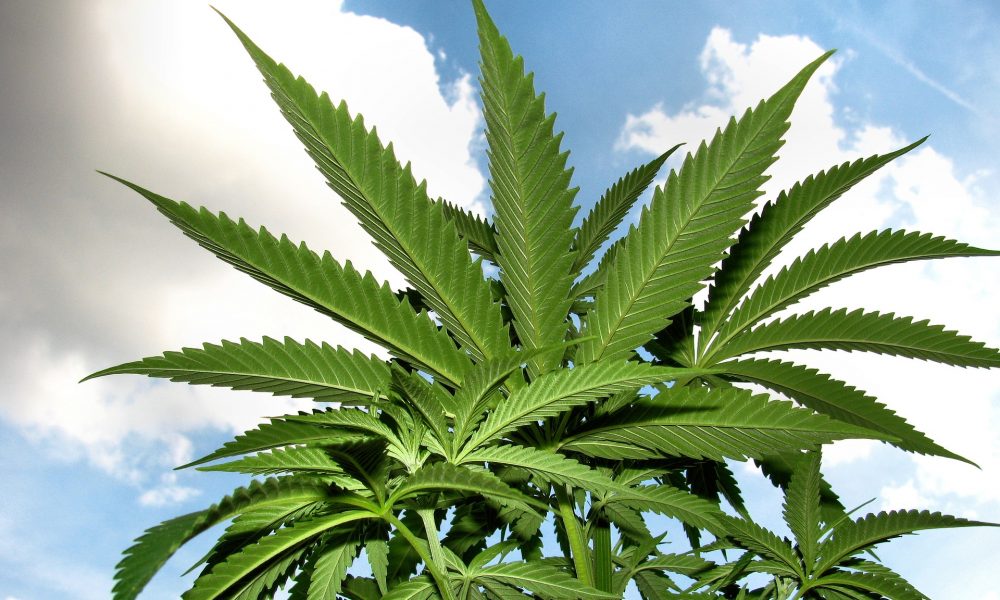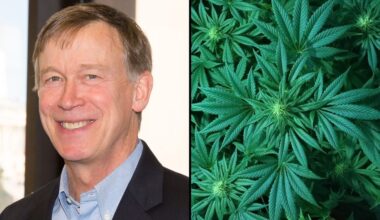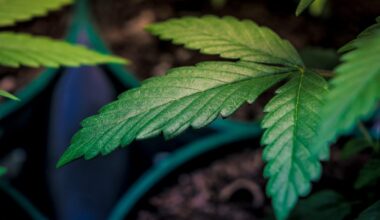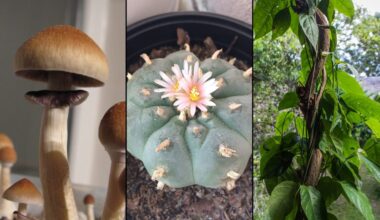“Cannabis is a natural plant that comes from the Earth—and our people lived off the land, and they got their medicine from the land.”
By Arielle Zionts, Kaiser Health News
In a growing number of U.S. states, people can both drink alcohol and legally smoke recreational marijuana. In others, they can use alcohol but not pot. But on the Pine Ridge Indian Reservation in South Dakota, the opposite is true: Marijuana is legal, but booze is banned.
Citizens of the Oglala Sioux Tribe overwhelmingly voted in 2020 to legalize recreational and medical marijuana on their sprawling reservation, which has prohibited the sale and consumption of alcohol for more than 100 years.
Customers visiting a dispensary on a recent Friday said they view marijuana as a safe and natural way to obtain relief from mental health disorders and chronic illnesses, which are common among tribal citizens. But they said alcohol has wreaked havoc on the health, safety, and life expectancy of tribal members.
“Cannabis is a natural plant that comes from the Earth—and our people lived off the land, and they got their medicine from the land,” Ann Marie Beane said while shopping at the No Worries dispensary in the small town of Pine Ridge. “Our Indigenous people, they suffer a lot from diabetes and cancer and various other illnesses, but the cannabis really helps them.”
Beane and her 22-year-old daughter said they use marijuana to ease their anxiety.
Marijuana use can lead to physical and mental health problems, but shoppers at the No Worries store said it’s less dangerous than alcohol, meth, and opioids. Those drugs lead to high rates of premature deaths on the reservation through car crashes, violence, and disease.
The Pine Ridge Reservation, established in 1889, is spread across more than 2 million acres of small towns, ranchland, prairies, and otherworldly badland formations. The U.S. Census Bureau says about 20,000 people live there, but community members say that’s a vast undercount and that the population could be as high as 40,000.
Alcohol has been illegal there for most of the reservation’s history, but that hasn’t stopped bootlegging and abuse. “It’s killing our youth—it’s killing our future generation,” Beane said.
The Oglala Sioux Tribe said in a 2012 lawsuit that about 25 percent of children born on the reservation had health or behavioral problems caused by exposure to alcohol in the womb. The lawsuit was filed against now-shuttered beer stores across the border in Nebraska.
The average life expectancy is just 64.5 years in Oglala Lakota County, which includes much of the Pine Ridge Reservation, according to a 2019 estimate from the Institute for Health Metrics and Evaluation at the University of Washington. That’s the lowest of any county in the U.S. and about 15 years below the national average.
Native Americans have high rates of health problems, which experts attribute to poverty and ways their communities have been harmed and fractured by federal policies. Those who live on reservations often have limited access to health care services and healthy food, and their main health care provider is the Indian Health Service, which has been dogged by complaints of underfunding and substandard care.
On the recent Friday, Beane was among dozens of customers who pulled into the gravel parking lot at the No Worries dispensary. After displaying IDs through a ticket window, customers entered the shop to buy loose marijuana, joints, and edibles prepared in a commercial-grade kitchen.
Only a few customers at No Worries said they use marijuana for purely recreational reasons. More said they use it to relieve anxiety, pain, and other medical conditions.
One customer’s eyes filled with tears as she lifted her shirt to reveal an ostomy bag, which doctors attached to her midsection after removing part of her intestines.
Another customer, Chantilly Little, said she’s recovering from addiction to stronger drugs. The 27-year-old said she has seen drugs kill tribal citizens and wants to be a responsible parent. “I’d rather smoke than do other drugs because I almost gave up on my kids,” Little said.
Stephanie Bolman—a breast cancer patient, former health care worker, and council member for the Lower Brule Sioux Tribe—was traveling through the area and decided to visit the No Worries shop.
Bolman doesn’t use marijuana but wanted to see the dispensary. She’s interested in legalizing medical cannabis on her reservation, situated along the Missouri River in central South Dakota, about four hours east of Pine Ridge.
“Unfortunately, the health care services provided by the Indian Health Service have failed so many in countless ways,” Bolman said. “It has left many to fend for themselves and endure so much pain and suffering that medical marijuana has proven to be lifesaving.”
In 2020, when tribal citizens approved the marijuana initiatives for the Pine Ridge Reservation, they rejected a proposal to legalize alcohol sales and consumption within the two casinos on the reservation.
In 2013, voters approved a referendum to legalize alcohol reservation-wide by a narrow margin. But the tribal council never implemented the change.
Lakota people did not use marijuana in pre-colonial times, said Craig Howe, a Lakota historian. Lakota and other Great Plains tribes also didn’t use alcohol until it was introduced by white traders in the 1800s.
Alcohol “was meant to control our people, and eventually it became a weapon of mass destruction,” said Ruth Cedar Face, an addiction treatment counselor and a member of the Oglala Sioux Tribe.
Cedar Face said that medical marijuana can be helpful for certain medical and mental health conditions but that it’s not a cure-all. “When it becomes a problem, when it becomes an addiction, that’s because they’re medicating away the things they need to deal with, like the trauma that is usually the core of any kind of addiction or unhealthy behavior,” she said.
Cedar Face said marijuana can also cause psychosis, lung damage, diminished brain development, and other problems for some users, especially teenagers and young adults.
People must be 21 or older to buy or use cannabis, according to Oglala Sioux law. They can face jail time for providing marijuana to minors and fines for using the drug while driving.
Dispensaries can sell only marijuana grown on the reservation, and customers are prohibited from transporting cannabis elsewhere. But about 40 percent of No Worries customers live outside the reservation, with many traveling from the Black Hills of South Dakota or northwestern Nebraska, said owner Adonis Saltes.
Recreational marijuana is illegal in South Dakota, which means law enforcement officers could charge anyone caught transporting or using cannabis outside reservation boundaries. But the sheriff’s office in Pennington County, which borders the Pine Ridge Reservation, said it hasn’t arrested anyone on such charges.
That contrasts with the experience of the Flandreau Santee Sioux Tribe on the eastern side of the state. State and local law enforcement officers are charging Native Americans and non-Natives who’ve left the reservation with cannabis from the reservation’s medical dispensary, according to Seth Pearman, the tribe’s attorney general.
This story was first published by Kaiser Health News.
KHN (Kaiser Health News) is a national newsroom that produces in-depth journalism about health issues. Together with Policy Analysis and Polling, KHN is one of the three major operating programs at KFF (Kaiser Family Foundation). KFF is an endowed nonprofit organization providing information on health issues to the nation.
Missouri Officials ‘Begin Planning’ For Marijuana Legalization Now That Reform Is On The Ballot
Medical Disclaimer:
The information provided in these blog posts is intended for general informational and educational purposes only. It is not a substitute for professional medical advice, diagnosis, or treatment. Always seek the advice of your physician or other qualified healthcare provider with any questions you may have regarding a medical condition. The use of any information provided in these blog posts is solely at your own risk. The authors and the website do not recommend or endorse any specific products, treatments, or procedures mentioned. Reliance on any information in these blog posts is solely at your own discretion.







